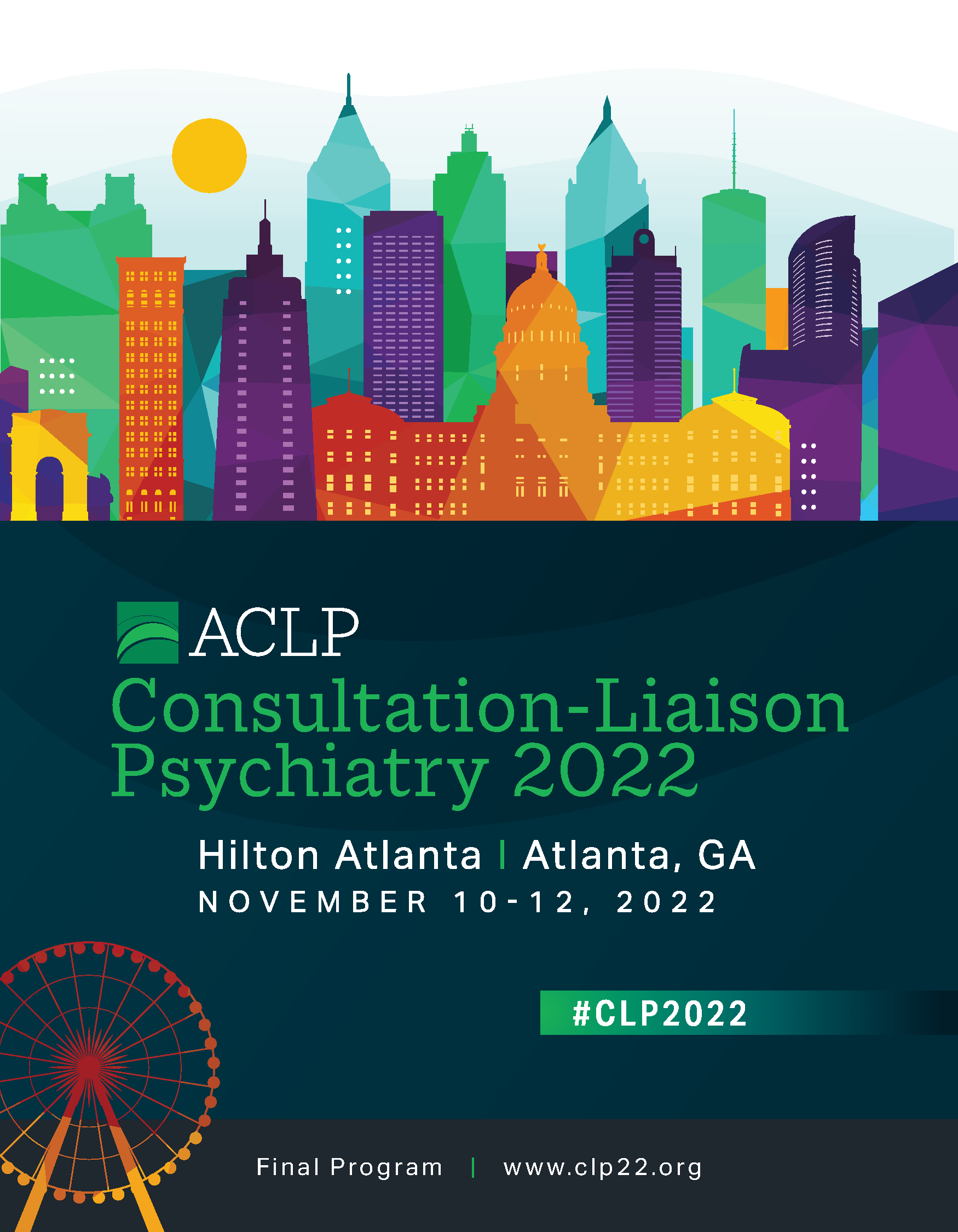Back
Brief Oral Papers
Session: Oral Presentation Session 01: Training and Education
WEBB FELLOW: Psychiatry Residents as Interdisciplinary Teachers: The PIES Model
Friday, November 11, 2022
11:00 AM – 12:30 PM
Location: Room 209-211
.jpg)
Molly Howland, MD (she/her/hers)
Staff Psychiatrist
Cleveland Clinic
Lakewood, Ohio- TS
Thomas Soeprono, MD (he/him/his)
Associate Program Director
University of Washington
Seattle, Washington
Presenting Author(s)
Co-Author(s)
Abstract:
Background:
Many psychiatry residents are intimidated by Consultation-Liaison (C-L) psychiatry due to the difficulty of teaching colleagues from other specialties as a trainee. However, C-L psychiatrists and general psychiatrists alike frequently teach interdisciplinary providers. Thus, developing the interdisciplinary teaching skills of psychiatry residents is invaluable, though few teaching programs have focused on this (Warren, 2018; Kitts, 2011). We present a novel, longitudinal teaching program that both improves interdisciplinary collaboration and cultivates psychiatry residents as interdisciplinary educators.
Methods: The Psychiatry Interdisciplinary Education Service (PIES) model is resident developed and organized. Psychiatry residents develop interactive “chalk talk”-style teaching sessions about common psychiatric issues encountered in medical settings (e.g., delirium, functional disorders, managing challenging patient behaviors) with longitudinal support from a faculty mentor. Prior to each talk, our community of psychiatry resident teachers and faculty mentors gathers for group feedback sessions for talk practice. The resident teacher delivers their talk in several iterations to audiences of internal medicine, family medicine, pediatrics, neurology, and obstetrics-gynecology trainees at preexisting noon conferences or didactics. We send same-day and one-month follow-up surveys to the talk audiences. Additionally, resident teachers and faculty mentors were surveyed about their experience. Survey questions featured 5-point Likert scales and open-ended questions about changes in psychiatry resident teachers’ teaching knowledge, skills, and confidence.
Results: The number of resident teachers who have undergone the PIES process has increased to fourteen over the course of its two years of existence. As of January 2022, 34 talks had been delivered in total, equating to approximately 300 nonpsychiatric trainees educated. Resident teachers on average (N=4, 80% response rate) selected “Strongly agree” that PIES has increased their knowledge about how to be an effective teacher. Faculty mentors (N=3, 75% response rate) on average selected “Agree” that residents have improved longitudinally in their teaching skills and selected “Strongly agree” that residents have improved in their teaching confidence. In the qualitative comments, faculty mentors have applauded PIES as an engaging and useful program that should be implemented in residency programs across the country. Trainees from other specialties have rated PIES talks an average of 9/10, and approximately 71% of respondents used the skills taught in the month following the talk.
Discussion: The PIES model has nurtured residents into confident, effective interdisciplinary teachers and created a community of interdisciplinary educators dedicated to improving their teaching during extracurricular time. Like PIES, previous interdisciplinary teaching programs have been highly rated by non-psychiatry audiences (Warren 2018); however, none to our knowledge have improved psychiatry residents’ teaching abilities. This teaching confidence could improve residents’ function on Consultation-Liaison (C-L) rotations and interest in pursuing a C-L career.
Conclusions:
The PIES model is a replicable interdisciplinary educational model that instills in residents the practice of lifelong learning.
Background:
Many psychiatry residents are intimidated by Consultation-Liaison (C-L) psychiatry due to the difficulty of teaching colleagues from other specialties as a trainee. However, C-L psychiatrists and general psychiatrists alike frequently teach interdisciplinary providers. Thus, developing the interdisciplinary teaching skills of psychiatry residents is invaluable, though few teaching programs have focused on this (Warren, 2018; Kitts, 2011). We present a novel, longitudinal teaching program that both improves interdisciplinary collaboration and cultivates psychiatry residents as interdisciplinary educators.
Methods: The Psychiatry Interdisciplinary Education Service (PIES) model is resident developed and organized. Psychiatry residents develop interactive “chalk talk”-style teaching sessions about common psychiatric issues encountered in medical settings (e.g., delirium, functional disorders, managing challenging patient behaviors) with longitudinal support from a faculty mentor. Prior to each talk, our community of psychiatry resident teachers and faculty mentors gathers for group feedback sessions for talk practice. The resident teacher delivers their talk in several iterations to audiences of internal medicine, family medicine, pediatrics, neurology, and obstetrics-gynecology trainees at preexisting noon conferences or didactics. We send same-day and one-month follow-up surveys to the talk audiences. Additionally, resident teachers and faculty mentors were surveyed about their experience. Survey questions featured 5-point Likert scales and open-ended questions about changes in psychiatry resident teachers’ teaching knowledge, skills, and confidence.
Results: The number of resident teachers who have undergone the PIES process has increased to fourteen over the course of its two years of existence. As of January 2022, 34 talks had been delivered in total, equating to approximately 300 nonpsychiatric trainees educated. Resident teachers on average (N=4, 80% response rate) selected “Strongly agree” that PIES has increased their knowledge about how to be an effective teacher. Faculty mentors (N=3, 75% response rate) on average selected “Agree” that residents have improved longitudinally in their teaching skills and selected “Strongly agree” that residents have improved in their teaching confidence. In the qualitative comments, faculty mentors have applauded PIES as an engaging and useful program that should be implemented in residency programs across the country. Trainees from other specialties have rated PIES talks an average of 9/10, and approximately 71% of respondents used the skills taught in the month following the talk.
Discussion: The PIES model has nurtured residents into confident, effective interdisciplinary teachers and created a community of interdisciplinary educators dedicated to improving their teaching during extracurricular time. Like PIES, previous interdisciplinary teaching programs have been highly rated by non-psychiatry audiences (Warren 2018); however, none to our knowledge have improved psychiatry residents’ teaching abilities. This teaching confidence could improve residents’ function on Consultation-Liaison (C-L) rotations and interest in pursuing a C-L career.
Conclusions:
The PIES model is a replicable interdisciplinary educational model that instills in residents the practice of lifelong learning.

